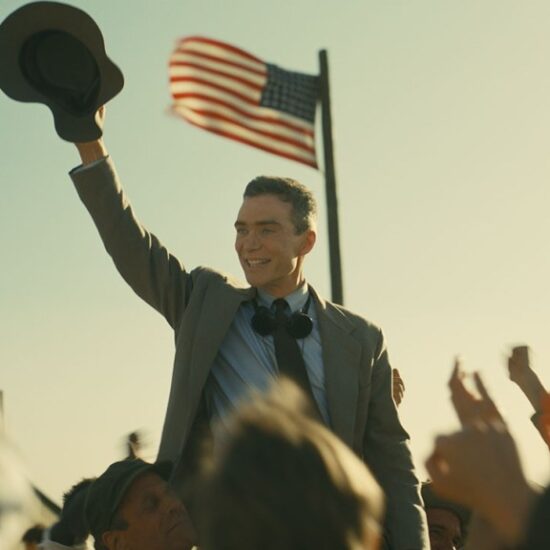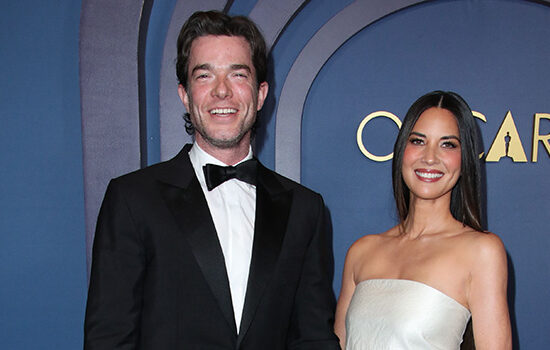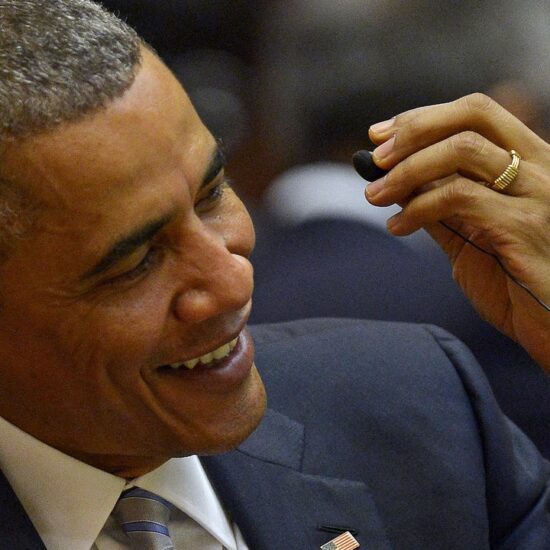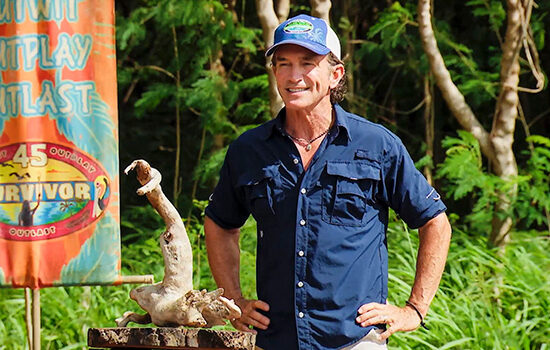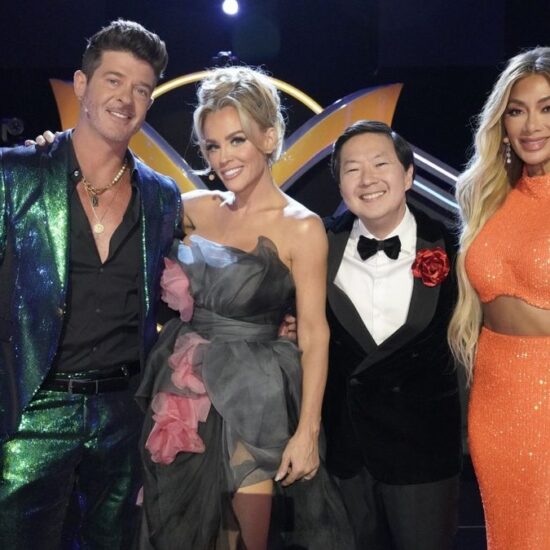
In Showtime docuseries Murder in Big Horn, directors Razelle Benally and Matthew Galkin take viewers on a sobering journey through several higher-profile cases of murdered and missing Indigenous women and girls in Montana. Across its three hours, the duo examines the similar and dissimilar ways the crisis — and the active effort to return them home or get justice in the wake of their deaths — has played out.
With its conclusion airing on Sunday, Feb. 19, the show weaves previous cases and evidence with new revelations while looking at another element fueling the crisis: crimes within the community. It’s a calculated choice that trusts its viewers’ understanding of its own storytelling structure, which as a whole meticulously unpacks all the factors at play around this ongoing string of murders and disappearances.
A docuseries that unfolds linearly through a string of cases over three years that ultimately catapulted the murdered and missing Indigenous women (MMIW) movement into the national spotlight, Murder in Big Horn also strategically uses its three hours to exhume how the crisis is a direct and ongoing byproduct of the bloody foundations on which America’s relationship to Indigenous people rests.
With episode one, the series creative team looked at the role of the sprawling landscape, complex jurisdictional realities and local law enforcement biases of the Crow Indian reservation, parts of the Northern Cheyenne reservation and neighboring Billings, Montana on the MMIW crisis. In episode two, the series offers lessons in white settler violence to unpack how an attempted cultural genocide of Native peoples has resulted in a long history of sex trafficking Indigenous women and an intentional deprivation of resources that impacts the mental health of the community, including its men.
This results in a third episode that uses its prior context — and the deaths of Henny Scott, Shacaiah Harding, Kaysera Stops Pretty Places and Selena Not Afraid — to go beyond dismissals of the MMIW crisis as merely an intracommunity issue. Instead, Murder in Big Horn is able to touch on how white colonialist violence continues to reverberate in and outside the community against its most vulnerable. In doing so, the docuseries shines a light on a final dark corner of what’s fueled the disappearances for generations, while also highlighting the resilience and support within the local community as it leads the charge to end the MMIW crisis.
Ahead of Sunday’s episode, The Hollywood Reporter spoke with the docuseries’ director-producer Benally and director-executive producer Galkin, who worked with the National Indigenous Women’s Resource Center for the series, about how they approached bringing greater attention to a centuries-old epidemic. Below THR also shares an exclusive clip of the docuseries’ final hour.
Quite a few families spoke to you about a particularly sensitive and difficult part of their lives. How did you approach the community and how open were they to talking?
RAZELLE BENALLY We had a large presence of key creatives on the production team. We had Ivy and Ivan McDonald, who have been involved in filming the MMIW movement and cases for a while, and then myself, who is Oglala Lakota and Diné, directing this project. So when we approached families, we approached those who have already been very openly advocating for justice. When we went in there, we were very clear and intentional with what we were doing. We left it open to each family if they wanted to participate because our goal was to elevate the visibility of this crisis but also the stories of these families. The ball was always in their court to participate or not. When someone like myself, Ivan and Ivy ask these families, it’s as one native person to another. It’s fairly comfortable. It feels second nature to do this. The way we approached it was culturally and traditionally in a way that was appropriate. It wasn’t so much having to hunt people down and ask can you be in our series. It was, this is what we’re doing and we want to include your family story in this.
There are a few organizational structures guiding this story, including a timeline of reported cases. You start with the story of 14-year-old Henny Scott, whose case represents many of the issues your docuseries tackles. Did her case help guide you or was it something that fit into the structure you already had planned?
MATTHEW GALKIN Razelle and I entered the filming and ultimately the edit with a general sense of story structure as represented on this board. We knew the cases we wanted to focus on and we picked those cases because Big Horn County, Montana, is an epicenter for MMIW cases. But also — and this ties back to why Henny’s story starts this — these are families that were instrumental in putting the MMIW movement on the map nationally. It’s because they did this advocacy work on behalf of their daughters or their sisters. So when we were looking at cases, because there are other cases in Big Horn County and in the surrounding areas in the years leading up to Henny, hers was the first that really got media attention. And we wanted to tell that story of how the movement grew.
There are two narratives here. On one level, there are the cases that we’re exploring, but on the other level, there’s the MMIW issue on a national stage that throughout the series grows. It really grows because these families were so committed and are so committed to their advocacy work. We generally felt like we were going to have Henny’s story and [Kaysera Stops Pretty Places’] story in the first hour, Selena [Not Afraid’s] story is quite large because of the information available, which is more than virtually any other case. We knew that was going to take up a fair amount of our series. So some of it was just practical consideration. How we told each story is different with each case. Each has similarities, but there are also differences. We let the story guide us. We really tried to go in open to documenting the stories that were there, that we found, and come back and accurately reflect those in the edit. So because they’re different cases, each one has a bit of a different shape to it.
BENALLY Also, it’s really unfortunate that we couldn’t do more cases. We had to, like Matthew said, be practical with the information that was available to us, and with who was willing to open up to us. There are a lot of factors involved. And unfortunately, there are so many cases out there where there’s hardly any information. Just because we focus on these cases doesn’t necessarily mean that the other cases don’t matter as much because they all matter. But these cases, in particular, we were able to paint a fuller picture so that audiences can understand the complexities and specificities of this issue. So that is why we selected these cases. There were other families we interviewed that were initially supposed to be part of this project. But it was so difficult to work everything together so that it paints a picture for audiences to understand. I think, ultimately, that’s what it came down to. It’s just hard. It’s a large issue. How do we compact and contextualize this, so that people can not only connect but can understand and will want to get motivated to want to do something about it.
GALKIN It was a conscious choice to go with a smaller number of cases and to go deeper than to try to tell 5,000 cases. At the very beginning of the process, Razelle and I explored every avenue and shape that the series could possibly take. We decided that this was the best path forward in order to tell the unfolding narrative but also being able to get at the larger context.
Eric Winburn and Leroy Not Afraid in Murder in Big Horn
Courtesy of SHOWTIME
You include the perspectives of former local law enforcement and other former government officials like the medical examiner. Why was including those voices and perspectives important to understanding what’s happening?
BENALLY It was imperative to contextualize why this issue exists in this area. We are up against a lot, jurisdiction-wise, because of the effects of colonization, through the judicial system. It was super important to have these folks say what they said because what it does is contextualize the biases. I have heard some feedback where folks are saying, “I can’t believe you let them speak.” But it’s like, just because we know as brown folks what it feels like to be targeted and to feel the discrimination in the stares or the lack of service when you enter an eating establishment, to be followed around in the store, greater America, they don’t understand that maybe this whole thing of negligence from law enforcement actually has something to do with the biases that people hold.
How were you able to get them to sit down and speak with you?
GALKIN We did it, number one, with persistence. We were after them for over a year. And number two, my whiteness, honestly, with the ex-Undersheriff [in Big Horn] Eric Winburn. I don’t think he says that to Razelle. He wouldn’t ever say that Razelle. I conducted that interview and Razelle and I knew that going in. We’re a two-headed directing team here. This sort of speaks to how we directed this entire series. For the greater good, who does what, who does which interview and how are we going to get the best, most emotionally honest answers to our questions? Who sits in the interview chair has something to do with that. We are making a series about a community. Obviously, law enforcement is a big part of that community.
The dynamics at play between the Native community and local law enforcement are quite complicated, as our series explores. To be honest with you, we wanted more law enforcement presence in the series. We desperately wanted a current representative of the sheriff’s office to sit for an interview because they were involved in the investigations of these cases. The ex-Undersheriff was too, but there is a wall that has been put up between the Big Horn County Sheriff’s Office and the rest of the media in the world. There’s no transparency into what, if any, effort went into the investigations. So for over a year, we were pushing and pushing, and ultimately, they just declined to participate in the series. I do think that we have complicated law enforcement perspectives from other people, but I wanted more because they have a lot to answer to.
In covering missing women in the region, you discuss sex trafficking — something you trace all the way back to Pocahontas, whose story hasn’t always been labeled as such. Why was tapping into pop cultural representations of Indigenous people important and how does it speak to what fuels the MMIW crisis?
BENALLY One of the most well-known depictions of Indigenous women — Pocahontas is that character. Pocahontas was a real person. Matoaka. That was her real name. Even with her name, right there, it’s erasure. Her age, she was a child when she was taken. She died in her early 20s overseas. Her remains are still there in England. We took what could be the most well-known depiction of a Native woman and unpacked a depiction that’s completely different than what she was in real life. We actually broke down how, to mass America, that process is exactly what’s wrong when you bring about the light of what really happened to her. Representation of Indigenous people in media is so important because sometimes that is all people get of our culture and of who we are. So when non-Natives are in control of how we’re represented, you’re going to get some very, very failed and untrue depictions. People grow up with that. They think they know who we are or what we were. A lot of people still think of us as relics of the past. They don’t see us as present-day living, normal people of society. All they know is these horrid depictions of Pocahontas, or even mascots, or what they think we are via westerns and John Wayne. You get a lack of respect, you get biases, you get people thinking of us as subhuman.
When you get a depiction like Pocahontas going off, choosing a white man and going overseas to leave her people, what kind of message is that sending to our relatives, to our young kids, to our girls? It’s strange to think that that whole story came from a child being trafficked overseas and being taken and that’s what we’re selling to kids. She is probably the original sex trafficking case of America on this large of a scale. It makes people think we wanted this. This was for the greater good. It’s not. Our land was taken away, our languages were taken away, our culture was taken away. And when you take that away from a peoples, they don’t know who they are after a while, and then you get these issues like Native-on-Native violence. So it’s being able to unpack that so that audiences can connect the dots and realize that these things are connected and wouldn’t be happening if maybe this, this and this didn’t happen. Instead of laying the blame like Eric Winburn. [He] doesn’t think the issue is real, that we don’t take accountability. We’re just doing this to ourselves, so it’s not anyone else’s problem but our own. Well, it wouldn’t even have been a problem if there weren’t years of historical traumas inflicted on our people. When you don’t have resources set up for the people that you fuck over, this is what happens. So it’s all context. It’s all connected.
You cover and question the history of law enforcement attributing these deaths to hypothermia, but you also visually capture how the wide-open landscape of Montana is threatening. How did you think about portraying the physical realities of this community while also not reinforcing law enforcement’s stances?
BENALLY I would say that it was about setting a pace and that had a lot to do with conversations between Matthew, our DP Jeff Hutchens and I. When we first went out to Montana together, we knew it was big sky country. I think for anybody who hasn’t been there — I’ve been there a lot because my family lives on the rez — it takes so long to go anywhere. I think those were some of the first conversations that we had. The vastness — what can we do cinematography-wise, cinematically to make that a character. When you get there, and you’re in that space, there’s a mood, there’s a tone that already exists there. So it’s just being able to talk with your DP and talk about what kind of shots can you do. It was important to juxtapose the beauty of the land that was always there. It’s almost like how could something as beautiful as the land take our girls in the way that they’re telling us? We can’t not show the beauty of the land, so how can we make the land a character itself that got caught up in this? And without having to talk about law enforcement, we were aware of the manner and causes of death of these girls prior. That wasn’t new to us.
GALKIN It’s possible that Selena Not Afraid died of hypothermia. It doesn’t factor in all of the things that happened before that. Henny, too, and I think [teacher and journalist] as Luella [Brien] says that quite eloquently in the series. Sure, they were frozen in the snow. so technically, they died of hypothermia. But what were the factors that led up to there? Were they running from something? Why were they out there in the first place? That is the underpinnings of a lot of our series — figuring out what those factors are. Specifically in these cases, but also historically, why are Native women so vulnerable in these places. It is vast country. It is a rough place for a human to try to exist, especially in winter. For the Bureau of Indian Affairs, the lack of resources is real. You have four cops that are trying to patrol two and a half million acres of land. That’s like a quarter of Montana. So it was important for us to show the vastness of it, and how isolated they were but the factors that went into these causes of death is really what ultimately we were looking to explore.

Luella Brien in Murder in Big Horn
Courtesy of SHOWTIME
In this final episode, you detail several new revelations tied to certain MMIW cases, an effort led by Luella Brien. Do you want these new updates to have an impact on the existing cases beyond being featured in your series?
GALKIN We wanted it to go as far as possible. Razelle and I aren’t private investigators. We’re not even investigative journalists. We’re documentarians, and we can argue the distinctions between those two things when we’re on a film festival panel together. (Laughs.) But, we want at its base level for the families to move these cases forward. These people have no recourse to law enforcement or answers or information whatsoever. So the hope is that we would come in and stimulate new interest in these cases. Luella, because she’s within the community, knows how to work the backchannels and who to call and who to speak to. But even she just hit a wall at some point. I would say going in that is the aspect of the series that was open in a kind of verite way. We know we have all of these things that we want to explore, but there are also these cases, and can we move them forward? Can Luella move them forward? She moved them as far as she possibly could with the information that was available, and that is filing FOIAs and working the back channels of the local government. But that department is absolutely a stonewall. It is virtually impossible to get real information.
BENALLY And these communities are small. Everybody knows everybody else. At the end of the day, whatever new information is out there, somebody knows. So that was a driving force as well, even if Matthew and I didn’t exist. Luella’s always had an interest in further investigating these cases on her own because she is a person of the community. When she left Big Horn County News, and she formed her own media company, Four Points Press, she was granted the freedom to do what she wants, what she’s passionate about. This is why she followed up to see if she sussed up any new information. But as Matthew was saying, you hit a brick wall. It’s almost like that’s it. You’ve tried to get as much information from everybody, stuff is really fishy with the departments, this is all the information we could present, basically. Nothing adds up.
GALKIN Ultimately this idea of an ending is how far can you take these cases and how do you end the series, as if there’s like an actual end that can ever happen with this. To us, it’s not an ending that we’re looking for. It was like an arrival at a destination. The destination for us is having the viewer understand the historical context. The crime — the capital C — becomes the history. It’s not a whodunit anymore. We maybe hooked you in with a true crime story. But ultimately, it’s not that at all. If it’s a true crime story, colonization is the true crime. So that was our “ending.” And hopefully, if viewers are not satisfied with that ending, then they will be educated by that ending.
Interview edited for length and clarity.









